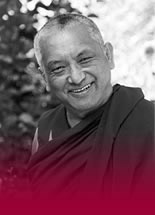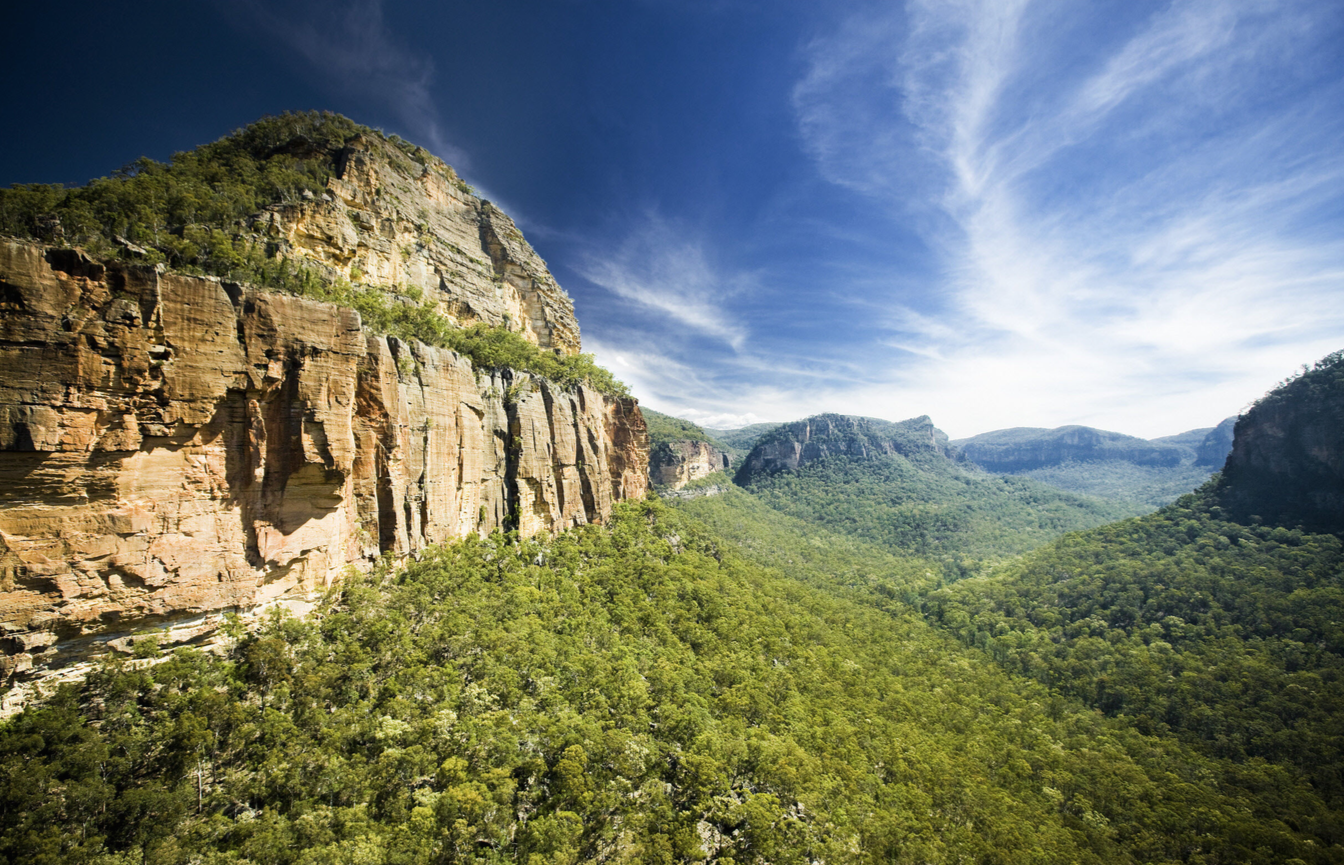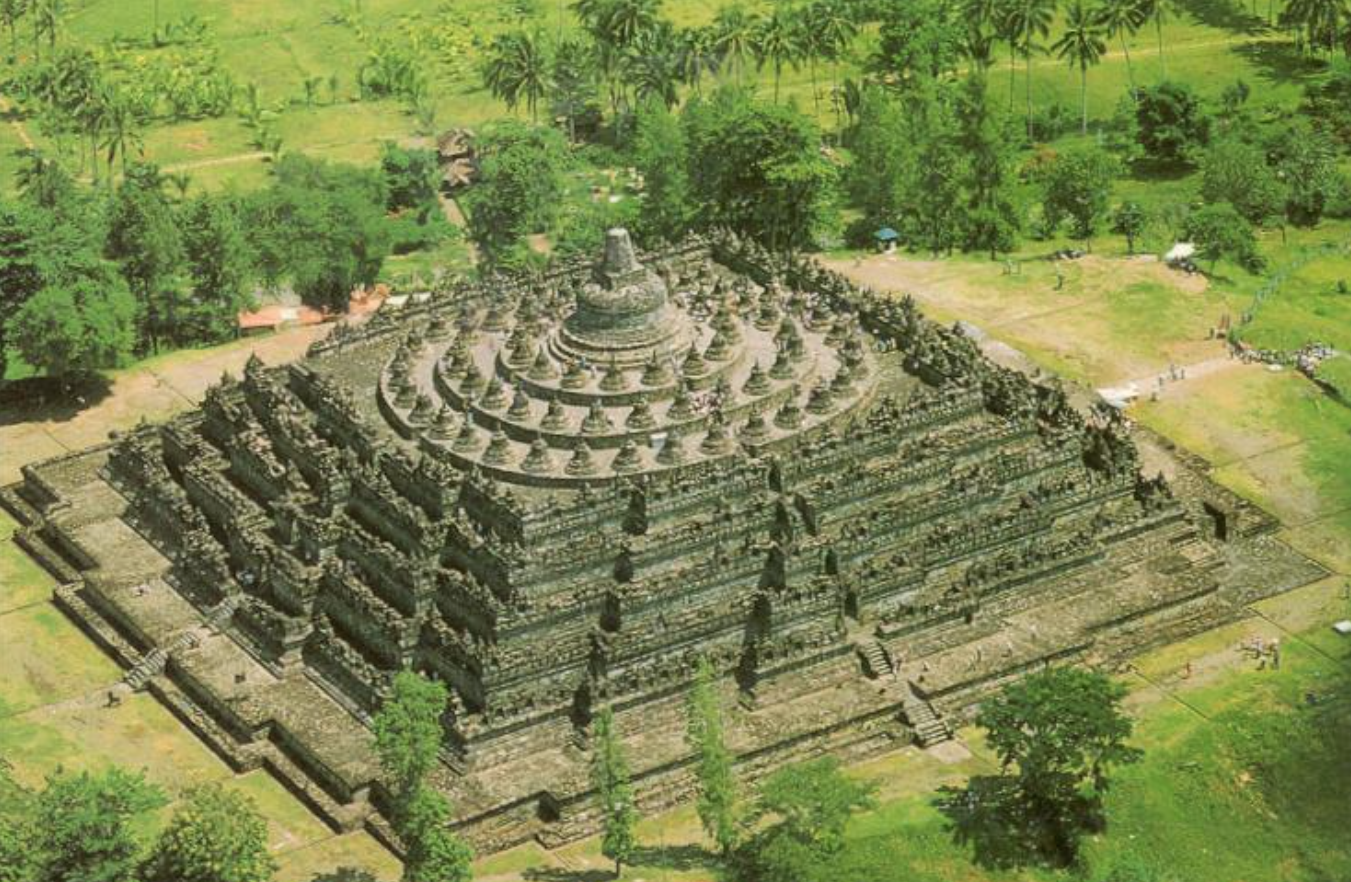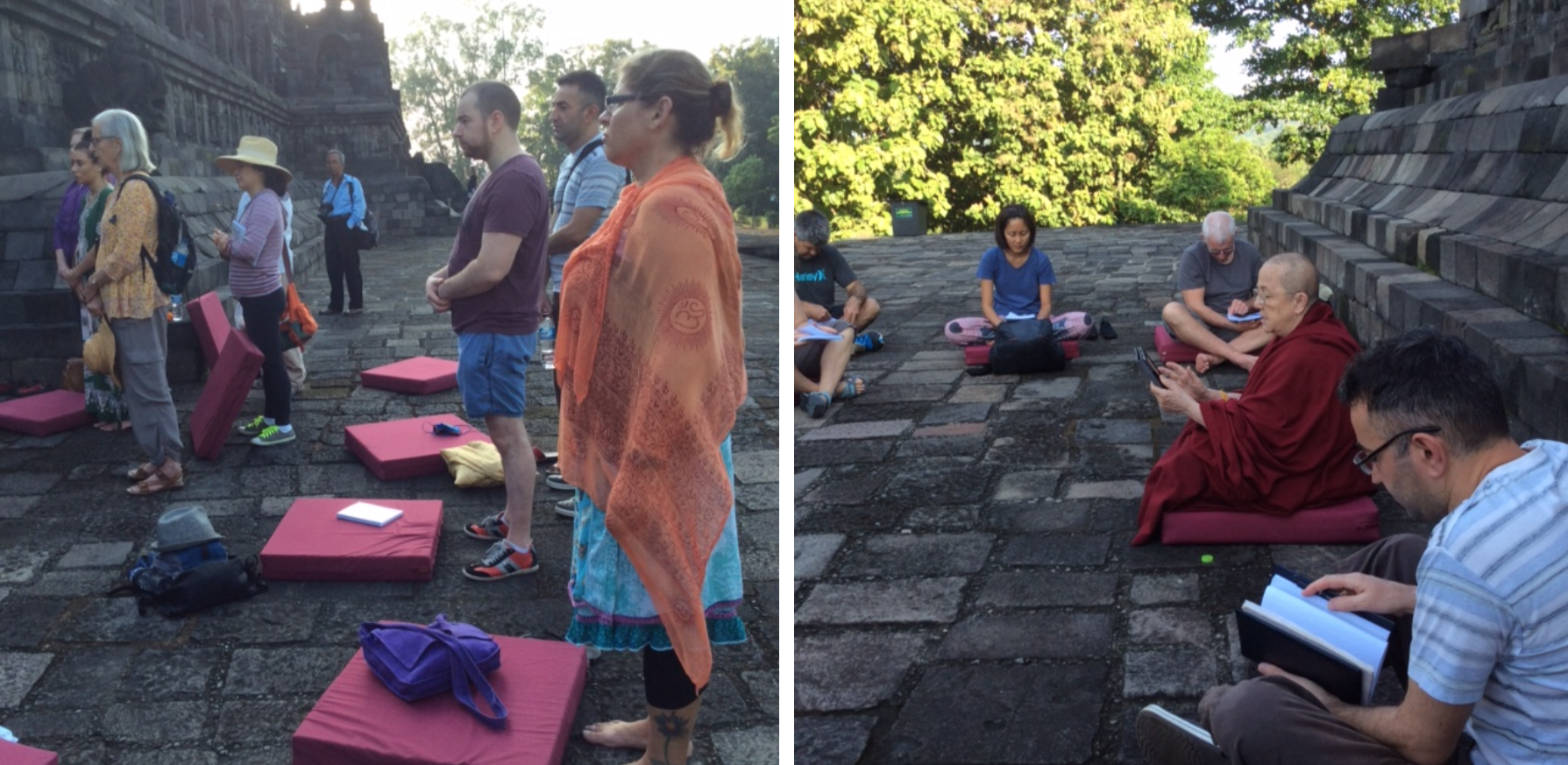Travel Blogs
29 June, 2016 | Indonesia
From Auckland in New Zealand I flew to Sydney and then drove on Thursday June 9, with my sister Jan, the two hours west to the Blue Mountains for our weekend course at Kunsang Yeshe Centre.
It’s winter here in Australia. Sydney never gets that cold, but nights can be chilly. You don’t see people in overcoats here, unless of course it’s raining. People tend to wear their jackets and woolies. And you still see the hardy surfers, even in the middle of July.

A rainy winter day in Sydney: magneettimedia.com; winter or not, Sydney surfers never give up: theaustralian.com.au
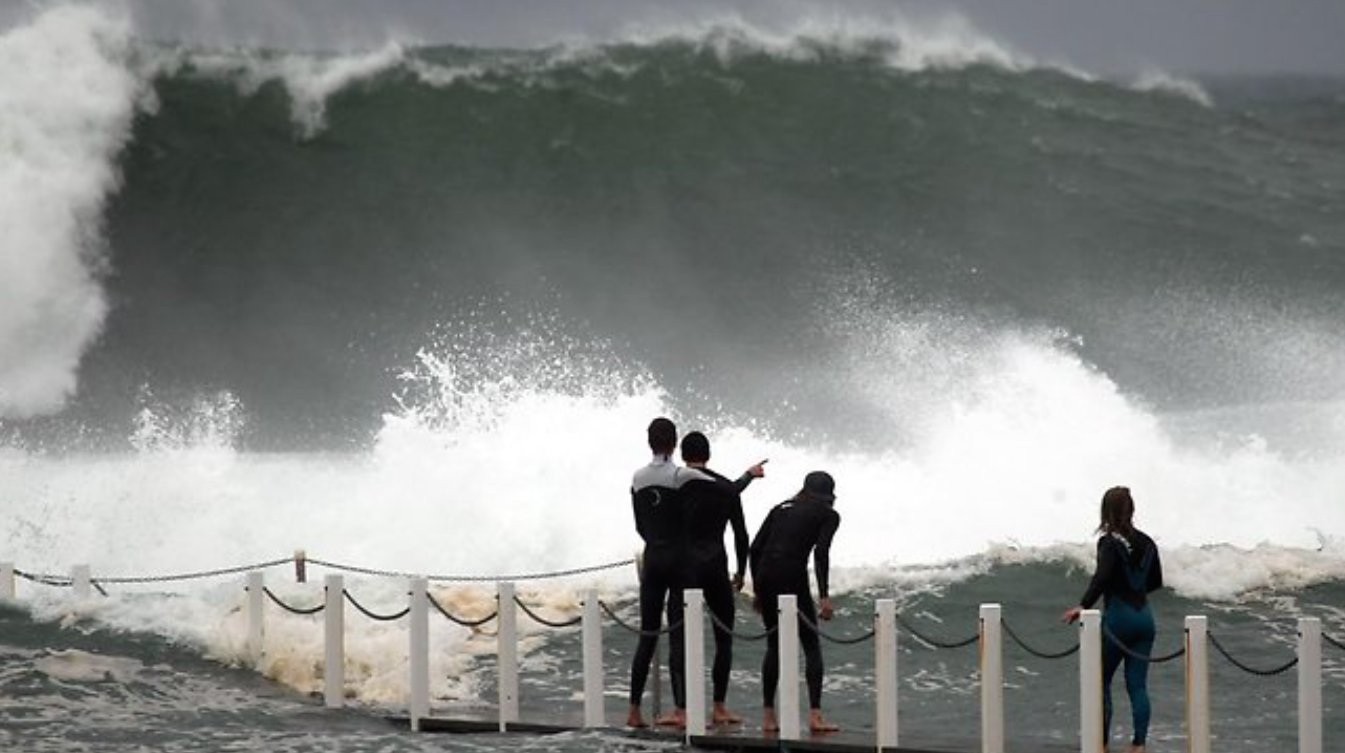
Australians have a curious attitude to the weather. Even when it’s obviously cold here, they somehow think that Australia is “hot.” Even when we could do with a very nice heater, thank you, we sit there and freeze. Queenslanders, up in the tropical north, are even worse than Sydneysiders. I’ll never forget my first course with the lamas, at Chenrezig Institute on the Sunshine Coast, in June – mid-winter. Gales of wind were coursing through the unfinished windows into the new gompa. “But it’s so hot in Queensland!” Sure it is, in the summer! On the other hand, they’ve retained a very British attitude. I remember when I was in Greece for a year, in Athens and on Paros, my friends there simply didn’t believe me when I said that we don’t take siestas, even though our summers in Sydney, let’s say, are hotter than in Greece. And that, of course, is because for those early white Australians, from Britain and Ireland, siestas didn’t exist: what a waste of a rare sunny day to spend it asleep!
It was in June in 1976 that I heard my first teachings, so this month is my fortieth anniversary of being a Buddhist. I took refuge with Lama Yeshe, who named me Yeshe Chenden. I talked about my first teachings in postcards 14 and 45.
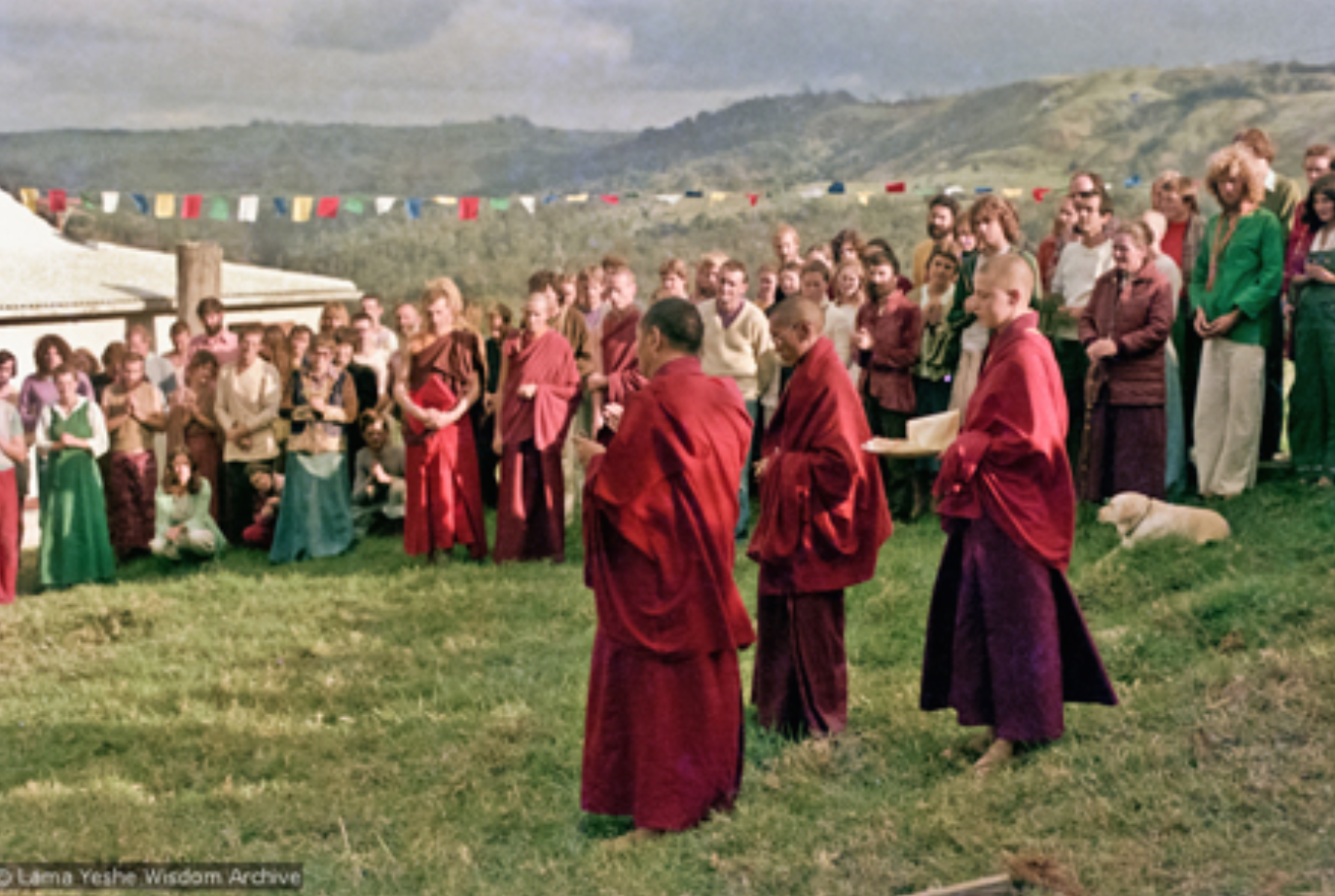
Lama Yeshe and Lama Zopa Rinpoche at Chenrezig Institute some time during June and August, 1976. I can’t see me there. . . Photo: lamayeshe.com. Below: Lama Yeshe at Chenrezig the same year; and my friend in the Blue Mountains, Margaret White, next to the mural of Thousand-armed Chenrezig in Katoomba done by some local artists.
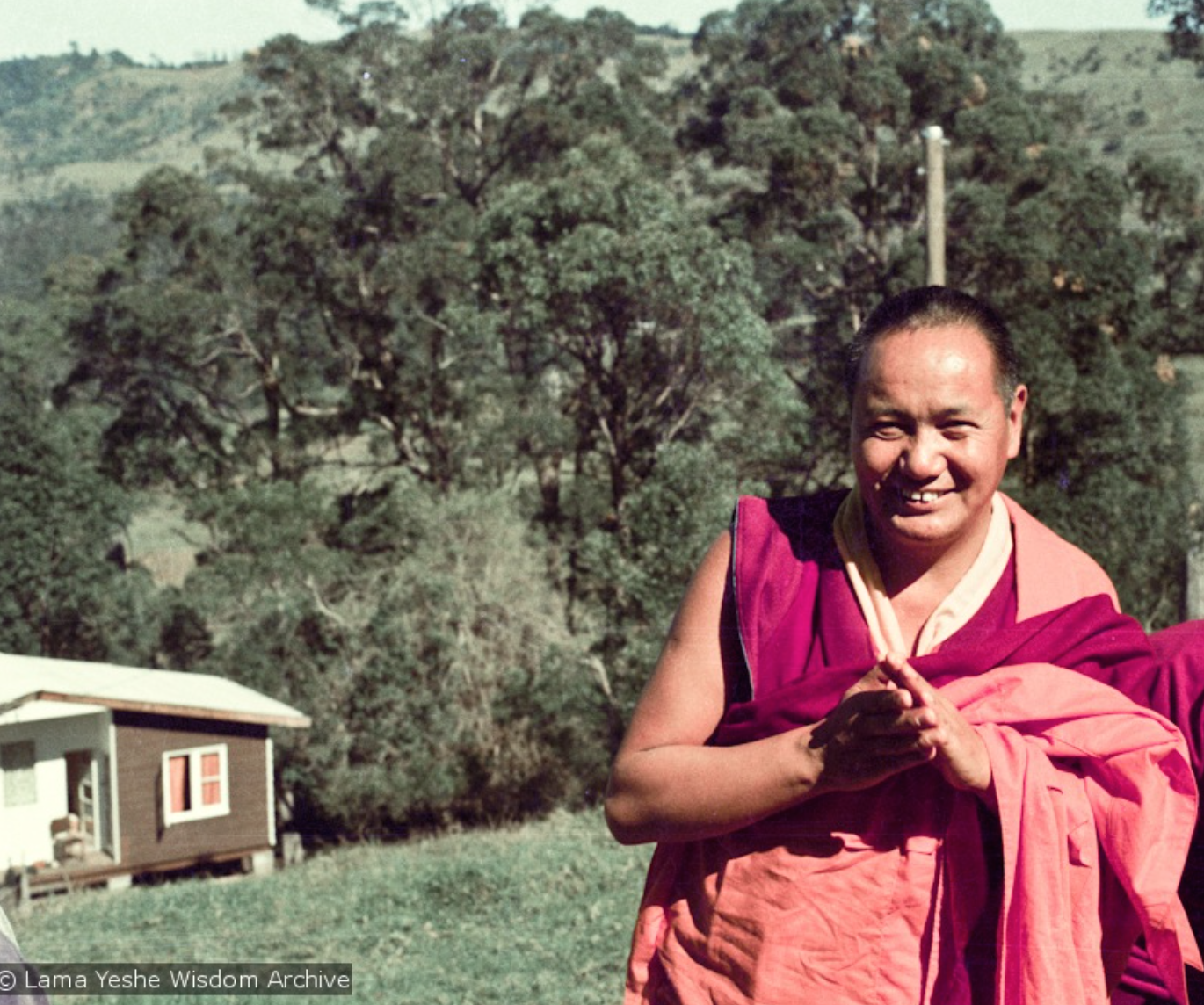

The Blue Mountains are gorgeous, a destination for many people. Nevertheless, I’ve never done any walking there, which is the main reason they’re so popular. Before the teachings this time I stayed for a day with my old friend Margaret White.
Mount Marsden, above, and sandstone escarpments and valleys near Newnes, both in the Blue Mountains. Photos: Hamilton-Lund.
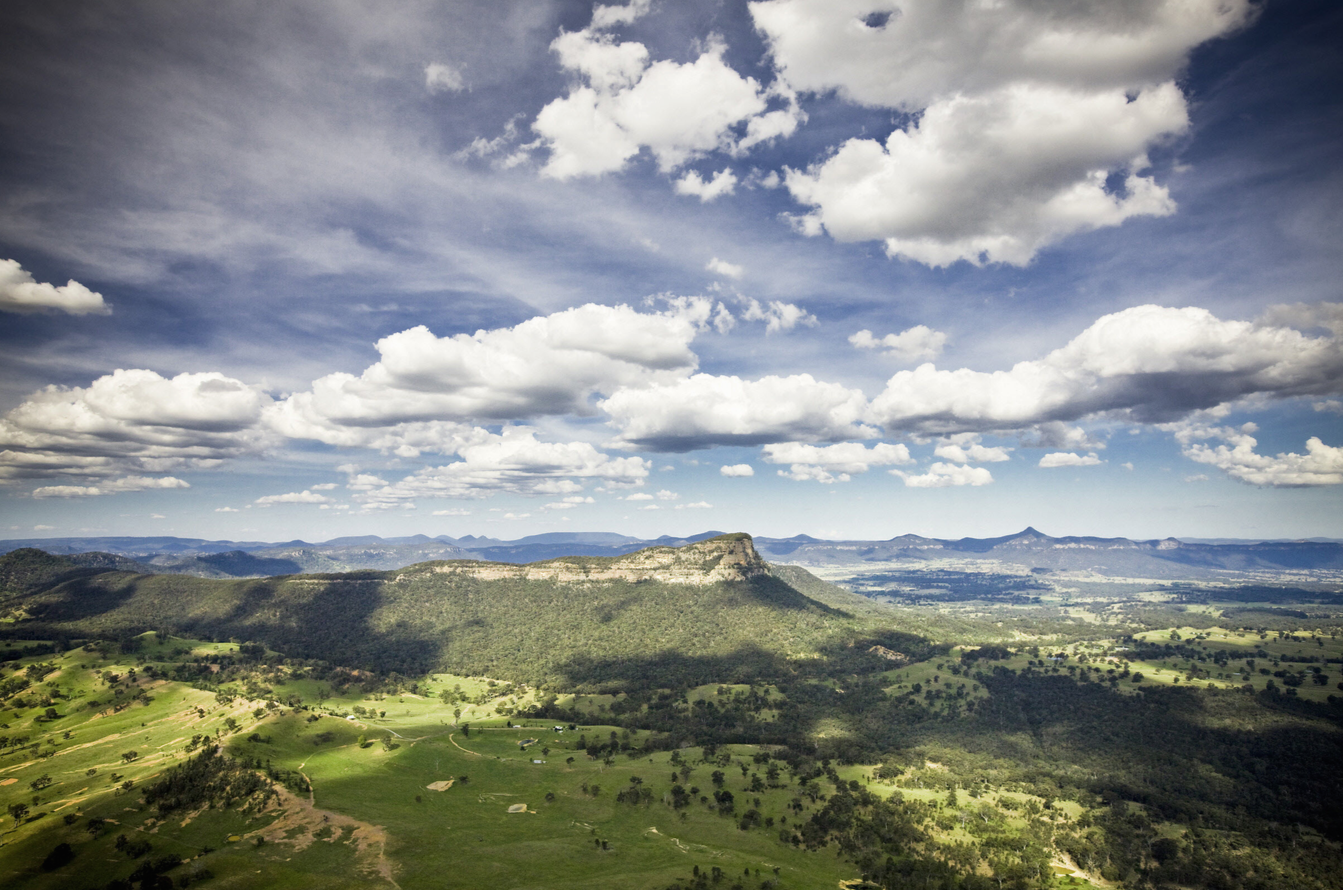
The week of June 20 took me to the two FPMT groups in Wagga Wagga and Wodonga, with a stopover at Junee prison. Libby Mowlam has been visiting the inmates there for years; I’m always glad to go with her.
In Wagga (for short) I sat in the car for a bit at the Charles Sturt University, where the course was, and couldn’t help but notice the birds. Here they are! I’ve no idea about their names. (A few humans among them as well.)
From New Zealand I arrived in Sydney, then to Wagga Wagga and Wodonga; then to Borobudur in Indonesia, then to four centers in Western Australia.
Then to Indonesia for our annual fundraiser for Liberation Prison Project, to the holy place of Borobudur. It’s a magnificent mandala, built in the ninth century, it seems. Indonesians are very proud of it. Wikipedia seems a pretty reasonable source of information about it:
“Borobudur, or Barabudur, is a 9th-century Mahayana Buddhist Temple in Magelang, Central Java, Indonesia. The monument consists of nine stacked platforms, six square and three circular, topped by a central dome. The temple is decorated with 2,672 relief panels and 504 Buddha statues. The central dome is surrounded by 72 Buddha statues, each seated inside a perforated stupa. It is the world's largest Buddhist temple, as well as one of the greatest Buddhist monuments in the world.
Marcello and Anita Tranchini, in “Borobudur: Golden Tales of the Buddha” Periplus Editions, HK, 1990. atman.net
“Built in the 9th century during the reign of the Sailendra Dynasty, the temple was designed in Javanese Buddhist architecture, which blends the Indonesian indigenous cult of ancestor worship and the Buddhist concept of attaining Nirvana. The temple also demonstrates the influences of Gupta art that reflects India's influence on the region, yet there are enough indigenous scenes and elements incorporated to make Borobudur uniquely Indonesian. The monument is both a shrine to the Lord Buddha and a place for Buddhist pilgrimage.
"The journey for pilgrims begins at the base of the monument and follows a path around the monument and ascends to the top through three levels symbolic of Buddhist cosmology: Kāmadhātu (the world of desire), Rupadhatu (the world of forms) and Arupadhatu (the world of formlessness). The monument guides pilgrims through an extensive system of stairways and corridors with 1,460 narrative relief panels on the walls and the balustrades. Borobudur has the largest and most complete ensemble of Buddhist reliefs in the world.
“Evidence suggests Borobudur was constructed in the 9th century and abandoned following the 14th-century decline of Hindu kingdoms in Java and the Javanese conversion to Islam. Worldwide knowledge of its existence was sparked in 1814 by Sir Thomas Stamford Raffles, then the British ruler of Java, who was advised of its location by native Indonesians. Borobudur has since been preserved through several restorations. The largest restoration project was undertaken between 1975 and 1982 by the Indonesian government and UNESCO, following which the monument was listed as a UNESCO World Heritage Site.
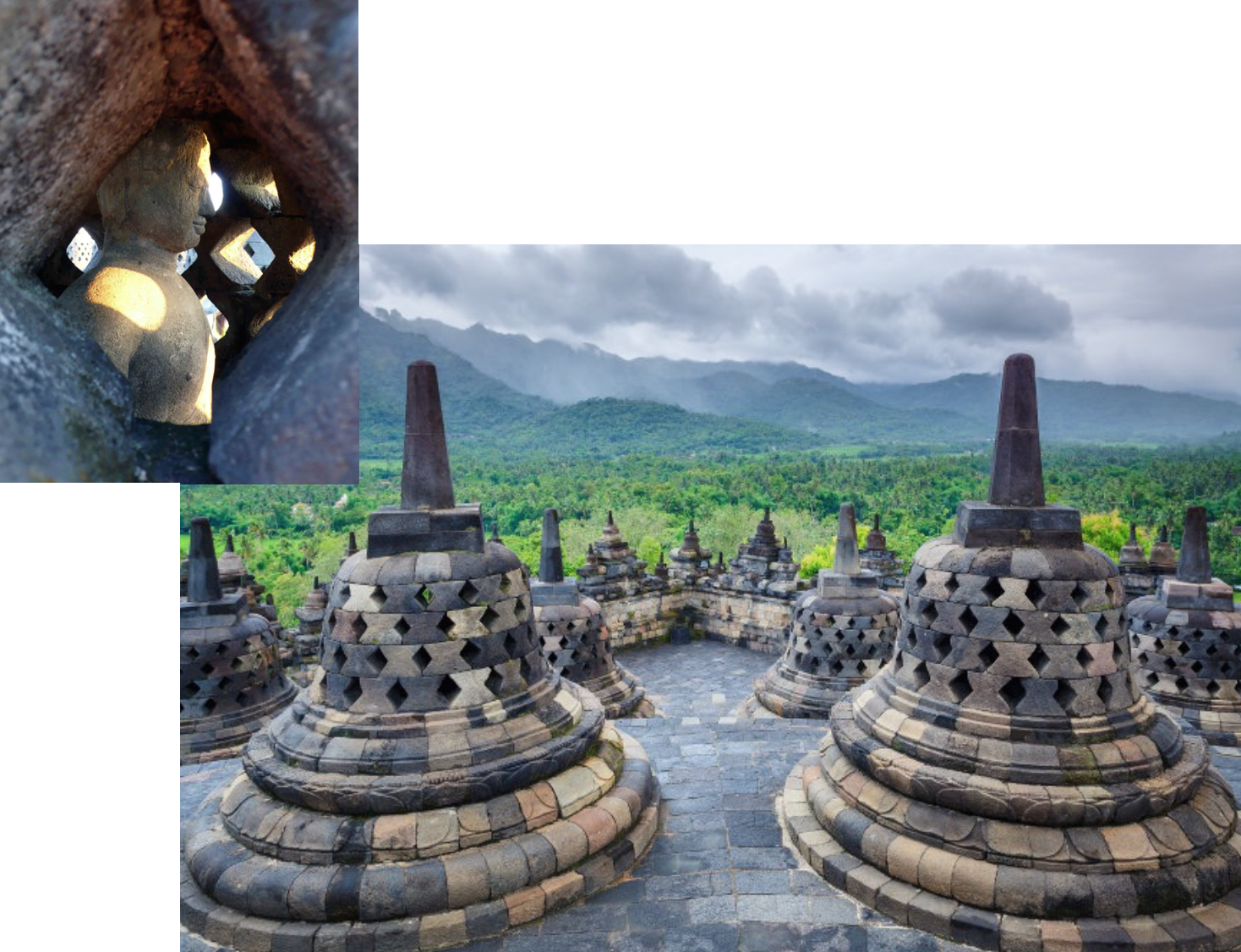
The stone stupas at the top of Borobudur all contain buddhas, upper left. atman.net
“Borobudur is still used for pilgrimage; once a year, Buddhists in Indonesia celebrate Vesak at the monument, and Borobudur is Indonesia's single most visited tourist attraction.”
We spent five days there, at the hotel right next door. They gave us a room for our daily teachings and meditations and we’d go to the mandala a couple of times a day, circumambulate, have teachings etc.
We did prayers and pujas every day at the holy site.
Our focus on the retreat is The Eight Verses of Mind Training by the eleventh century Tibetan yogi Langri Tangpa, which has its source in the teachings of Atisha, who got them from his guru Serlingpa in nearby Sumatra, where they spent many years together. It’s sure they both must have placed their holy feet at Borobudur.
These teachings are outrageous, in my opinion. Initially they were kept secret because the instructions are so utterly opposite to the usual view of the world. They’re given at the most advanced level of the compassion teachings, and we need to be “a suitable vessel” to receive them appropriately, Pabongka Rinpoche says. They’re not for the faint-hearted, that’s for sure.
In the second verse Langri Tangpa exhorts us “while in the company of others to always see ourselves as the lowest of all and to see everyone else as supreme.” This is not natural at all! In fact, I’m not joking when I say that if, as a therapist, you gave this advice to someone you could be sued! “Excuse me, I already see myself as the lowest of all! What are you asking of me!?”
A “suitable vessel” would be someone who has already subdued their body and speech by living in vows, and begun the process of controlling their mind and subduing attachment, anger, and the rest of the delusions that usually run the show. The only person really capable of this level of practice, in other words, is one who understands deeply that the delusions are the source of our pain; they’re ready for the radical job of happily greeting any opportunity to smash the instinct to cherish self by making the paradigm of putting others first. An atomic bomb on ego-grasping, that’s for sure!
--------
On June 29 I took an overnight flight from Jakarta to Sydney then changed planes for the five-hour flight to Perth, then changed vehicles for Julie’s car and drove the five hours south to Albany. More about Western Australia in postcard 72.

